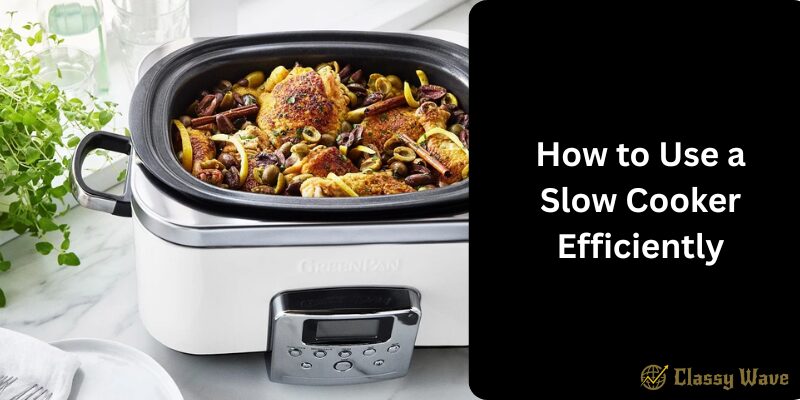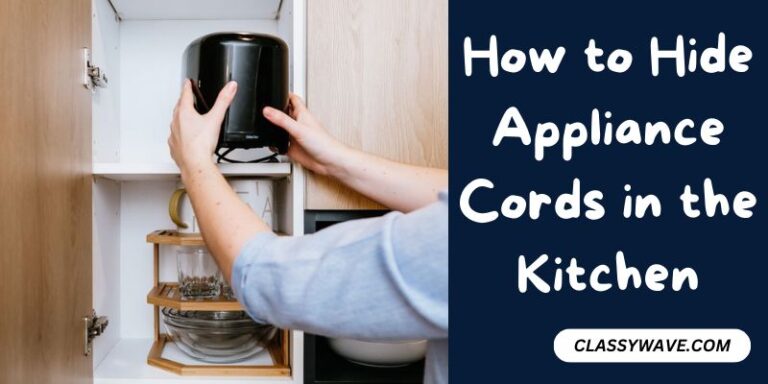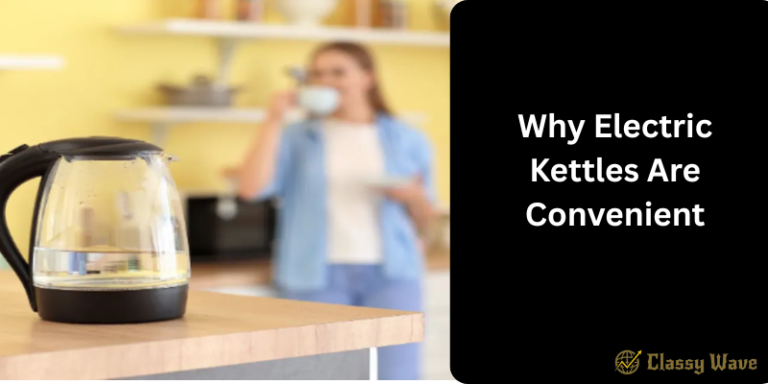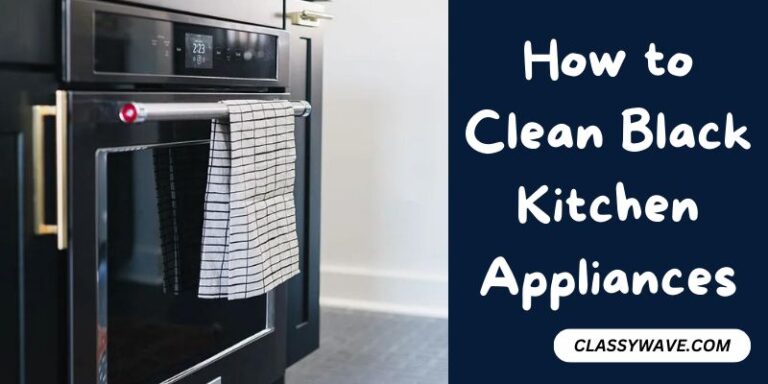How to Use a Slow Cooker Efficiently | Classy Wave
If you’re looking for a way to prepare delicious, home-cooked meals with minimal effort, a slow cooker is your best friend. It’s one of the most efficient kitchen appliances that saves time, energy, and stress. Whether you’re a busy professional, a student, or a home chef, learning how to use a slow cooker efficiently can completely transform your cooking routine.
Let’s explore practical tips and tricks to make the most out of your slow cooker while keeping meals flavorful and energy-efficient.
Understand Your Slow Cooker
Before you start cooking, get familiar with your slow cooker’s settings. Most models have:
- Low Setting (190°F – 200°F): Perfect for slow-cooking soups, stews, and tougher meats over 6–8 hours.
- High Setting (250°F – 300°F): Ideal for cooking meals faster within 3–4 hours.
- Keep Warm Function: Maintains your food at serving temperature without overcooking.
Knowing how each setting works helps you plan your recipes and timings better.
Plan Your Meals Ahead
Slow cookers are designed for convenience, but they work best when you plan your meals in advance. Prep your ingredients the night before — chop veggies, marinate meats, or measure spices — and store them in the fridge. In the morning, simply dump everything into the cooker, set the timer, and you’re done!
Meal planning ensures that your ingredients blend well and you avoid last-minute kitchen chaos.
Layer Ingredients the Right Way
Proper layering is key to efficient cooking. Here’s a simple rule:
- Dense vegetables like potatoes, carrots, and onions go at the bottom.
- Meats should be placed in the middle.
- Delicate vegetables and herbs go on top.
This arrangement ensures even cooking since heat distributes from the bottom up.
Don’t Overfill or Underfill
A common mistake is filling the slow cooker too much or too little. For best results, keep it between half and two-thirds full.
Overfilling can cause uneven cooking and spills, while underfilling can dry out your food. Follow this golden ratio for perfectly cooked meals every time.
Use the Right Cut of Meat
One of the best-kept secrets about slow cookers is that tough cuts of meat turn out tender and juicy when cooked slowly.
Choose cuts like:
- Chuck roast
- Pork shoulder
- Chicken thighs
- Lamb shanks
The slow, moist heat breaks down collagen in the meat, giving you that melt-in-your-mouth texture.
Avoid Lifting the Lid Frequently
It’s tempting to check your food, but every time you lift the lid, heat escapes, adding 15–20 minutes to the cooking time.
Trust the process — let your slow cooker do the work without unnecessary interruptions.
Use Less Liquid
Unlike stovetop cooking, very little moisture evaporates in a slow cooker. So, reduce liquids by about one-third from the original recipe.
If you add too much, your dish can become soupy or bland. Start small — you can always adjust later.
Preheat the Cooker for Better Results
Just like ovens, preheating your slow cooker for 15–20 minutes before adding ingredients helps speed up the cooking process. It’s especially helpful for meat-based dishes, as it ensures even heat distribution from the beginning.
Brown Your Meat First
For maximum flavor, quickly brown meats in a skillet before placing them in the slow cooker. This step adds depth to your dish by caramelizing the meat’s surface and locking in juices.
It’s an optional step, but it can make your meals taste gourmet-level delicious.
Add Dairy and Fresh Herbs Later
Dairy products like milk, cream, or cheese can curdle if cooked too long. Always add them in the last 30–45 minutes of cooking.
Similarly, fresh herbs lose their flavor if added early. Add them just before serving for a burst of freshness.
Use the Right Size Cooker
Choosing the correct slow cooker size affects efficiency.
- For 1–2 people: 3-quart cooker
- For 3–4 people: 4–5-quart cooker
- For families: 6–7-quart cooker
A properly sized cooker ensures even heating and energy savings.
Cook Overnight or While at Work
The best part about slow cookers is that they work while you sleep or work. Prepare your ingredients in the evening, start the cooker overnight, and wake up to a warm breakfast or ready-to-pack lunch.
Alternatively, set it in the morning and return home to a freshly cooked dinner — hassle-free and time-saving.
Thicken Sauces Smartly
If your dish turns out too watery, remove the lid for the last 30 minutes to let excess liquid evaporate. You can also mix a spoonful of cornstarch or flour with cold water and stir it into the pot to thicken the sauce naturally.
Use Liners for Easy Cleaning
Slow cooker liners or parchment paper can make cleanup much easier. They prevent food from sticking to the pot and save you time scrubbing after meals.
Store and Reheat Leftovers Safely
After cooking, allow leftovers to cool before transferring them to airtight containers. Store in the refrigerator for up to 3 days or freeze for later use.
When reheating, use the “Low” setting or microwave until the food reaches 165°F to ensure safety and taste.
Energy-Saving Tips
Slow cookers are already energy-efficient, but here’s how to maximize savings:
- Cook multiple portions and freeze extras.
- Use the Low setting whenever possible.
- Avoid using high-energy kitchen appliances alongside.
A slow cooker uses less energy than an oven, making it both eco-friendly and budget-friendly.
Conclusion
Using a slow cooker efficiently is all about smart preparation, patience, and understanding your appliance. With a little planning, you can create flavorful, tender, and perfectly cooked meals without spending hours in the kitchen. It’s your secret weapon for saving time, money, and energy — while still enjoying homemade comfort food.







